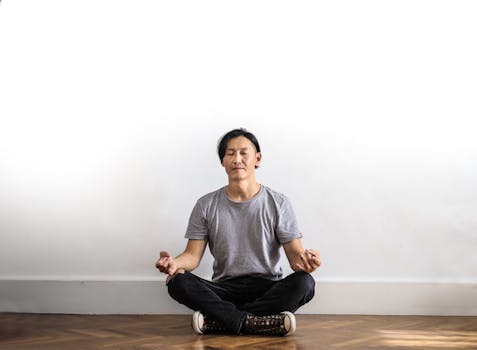
Unlock Inner Peace: Essential Mindfulness Meditation Techniques
Takeaways: Mindfulness meditation can significantly enhance your mental well-being and reduce stress. By incorporating simple techniques like body scanning, breath awareness, and guided meditation into your daily routine, you can cultivate a deeper sense of self-awareness and tranquility.
Mindfulness meditation is a powerful practice that allows individuals to gain a deeper understanding of their thoughts, emotions, and surroundings. This article explores various techniques that can help beginners and seasoned practitioners alike to enhance their meditation experience and achieve a state of inner peace.
Understanding Mindfulness Meditation

One of the core principles of mindfulness is to observe your thoughts and feelings as they arise, rather than becoming overwhelmed or trying to suppress them. This gentle observation fosters a sense of acceptance and can lead to reduced anxiety and stress levels.
Popular Mindfulness Meditation Techniques

1. Breath Awareness
Breath awareness is one of the simplest and most effective mindfulness techniques. To practice this method, find a comfortable seated position and close your eyes. Begin by taking deep, slow breaths, focusing your attention on the sensation of the air entering and leaving your body. If your mind starts to wander, gently bring your focus back to your breath. This practice not only calms the mind but also enhances concentration.
2. Body Scan Meditation
The body scan technique involves mentally scanning your body from head to toe, noticing any sensations, tension, or areas of discomfort. Start by lying down comfortably and bring your awareness to your head, gradually moving down to your feet. Spend a few moments on each part of your body, acknowledging any feelings without trying to change them. This technique promotes relaxation and helps you become more in tune with your physical self.
3. Guided Meditation
Guided meditation is a fantastic option for beginners who may find it challenging to meditate on their own. This technique involves listening to a recorded meditation led by an instructor. Guided sessions often include visualization, relaxation techniques, and mindfulness prompts that help you stay focused. Many apps and websites offer a variety of guided meditations, ranging from a few minutes to over an hour.
4. Walking Meditation
Walking meditation combines physical movement with mindfulness. It is an excellent practice for those who find it difficult to sit still. To practice walking meditation, find a quiet space where you can walk back and forth. Focus on the sensations of your feet touching the ground, the movement of your legs, and your breath as you walk. This technique encourages you to be present in your body while still engaging in mindful movement.
5. Loving-Kindness Meditation (Metta)
Loving-kindness meditation, or Metta, involves cultivating an attitude of love and compassion towards oneself and others. Begin by sitting comfortably, closing your eyes, and silently repeating phrases that promote goodwill, such as “May I be happy, may I be healthy, may I be safe, may I be at ease.” After a few minutes, extend these wishes to loved ones, acquaintances, and even those you may have conflicts with. This technique fosters a sense of connection and compassion.
Incorporating Mindfulness into Daily Life

1. Start Small
Begin with just a few minutes of meditation each day. As you become more comfortable, gradually increase your practice time. Consistency is key; even short daily sessions can lead to significant benefits.
2. Create a Dedicated Space
Designate a quiet corner in your home for meditation. This space should be free from distractions and inviting, making it easier to commit to your practice.
3. Use Mindfulness Apps
Leverage technology to enhance your mindfulness practice. Many apps offer guided meditations, tracking features, and reminders to help you stay on track.
4. Practice Mindfulness in Everyday Activities
Mindfulness can be practiced outside of formal meditation sessions. Engage fully in daily activities, such as eating, walking, or even washing dishes, by paying attention to the sensations and experiences involved.
5. Join a Community
Consider joining a local meditation group or online community to connect with others who share your interest in mindfulness. Sharing experiences and learning from others can enhance your practice.





